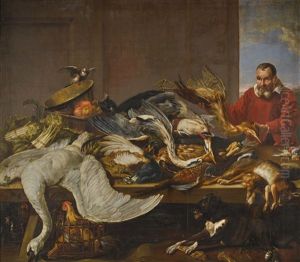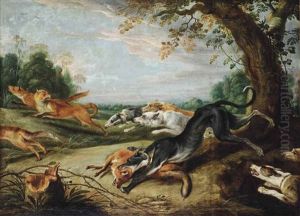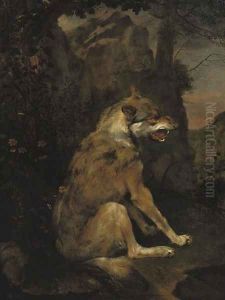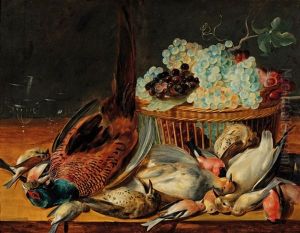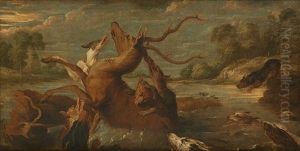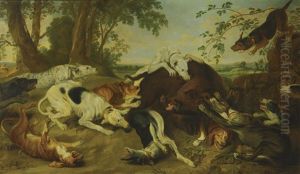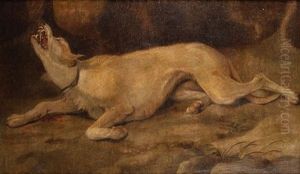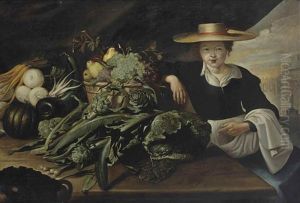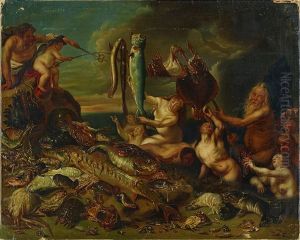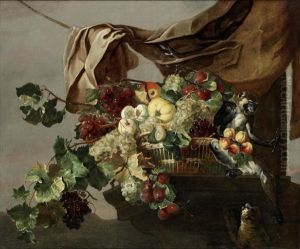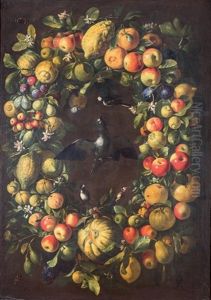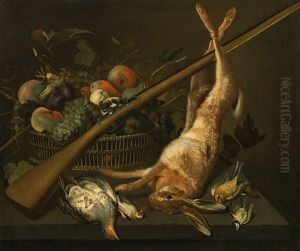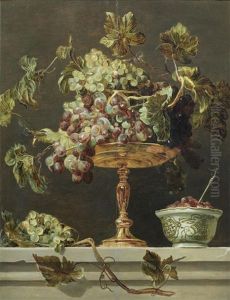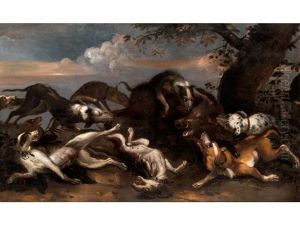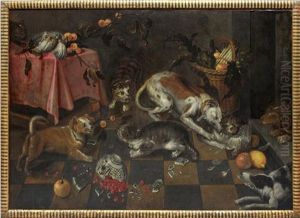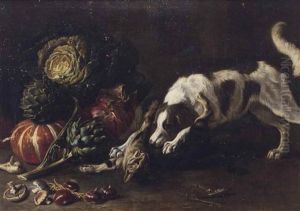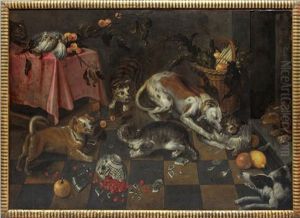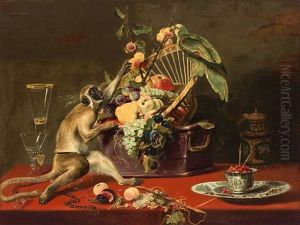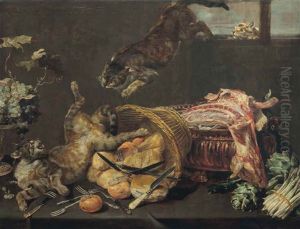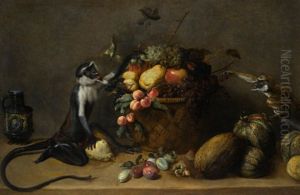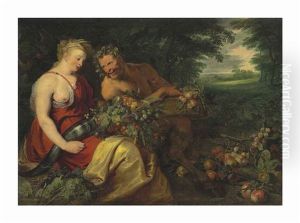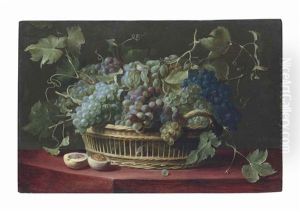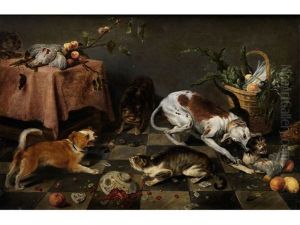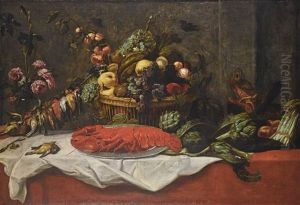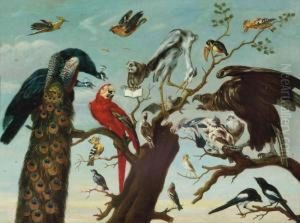Frans Snijders Paintings
Frans Snijders, born in Antwerp, Belgium in 1579, was a prominent Flemish Baroque painter known for his mastery in painting animals, hunting scenes, and still lifes, particularly those featuring lavish spreads of food and game. His work is characterized by a meticulous attention to detail, vibrant colors, and dynamic compositions, which have made him one of the most celebrated animaliers and still life painters of his time. Snijders began his artistic journey as an apprentice to Pieter Brueghel the Younger and later to Hendrick van Balen. However, it was his association with Peter Paul Rubens that significantly influenced his artistic direction and brought him considerable acclaim. The two artists collaborated on several projects, with Snijders often painting the animals in scenes primarily composed by Rubens.
Throughout his career, Snijders developed a style that was not only innovative in its subject matter but also in its execution. He had an exceptional ability to depict textures and surfaces in a way that made them almost tangible to the viewer. His still lifes were not merely arrangements of food and objects but were imbued with a sense of abundance and vitality that reflected the prosperity of the Southern Netherlands during the 17th century. Snijders' paintings often served as a showcase of the wealth and cultural sophistication of his patrons, featuring exotic fruits, luxurious game, and sumptuous textiles.
His influence extended beyond his immediate circle, inspiring a generation of artists who came after him. Snijders was not just a painter but also a teacher, passing on his techniques and vision to future artists. His works were sought after by collectors across Europe, and today, his paintings can be found in major museums and collections worldwide. Snijders' legacy as a master of still life and animal painting continues to be celebrated for its significant contribution to the Baroque period.
Frans Snijders died in Antwerp in 1657, leaving behind a body of work that continues to be admired for its vitality, richness, and technical brilliance. Through his innovative approach to still life and animal subjects, Snijders played a crucial role in the development of these genres, establishing a standard that would influence Flemish painting for years to come.
